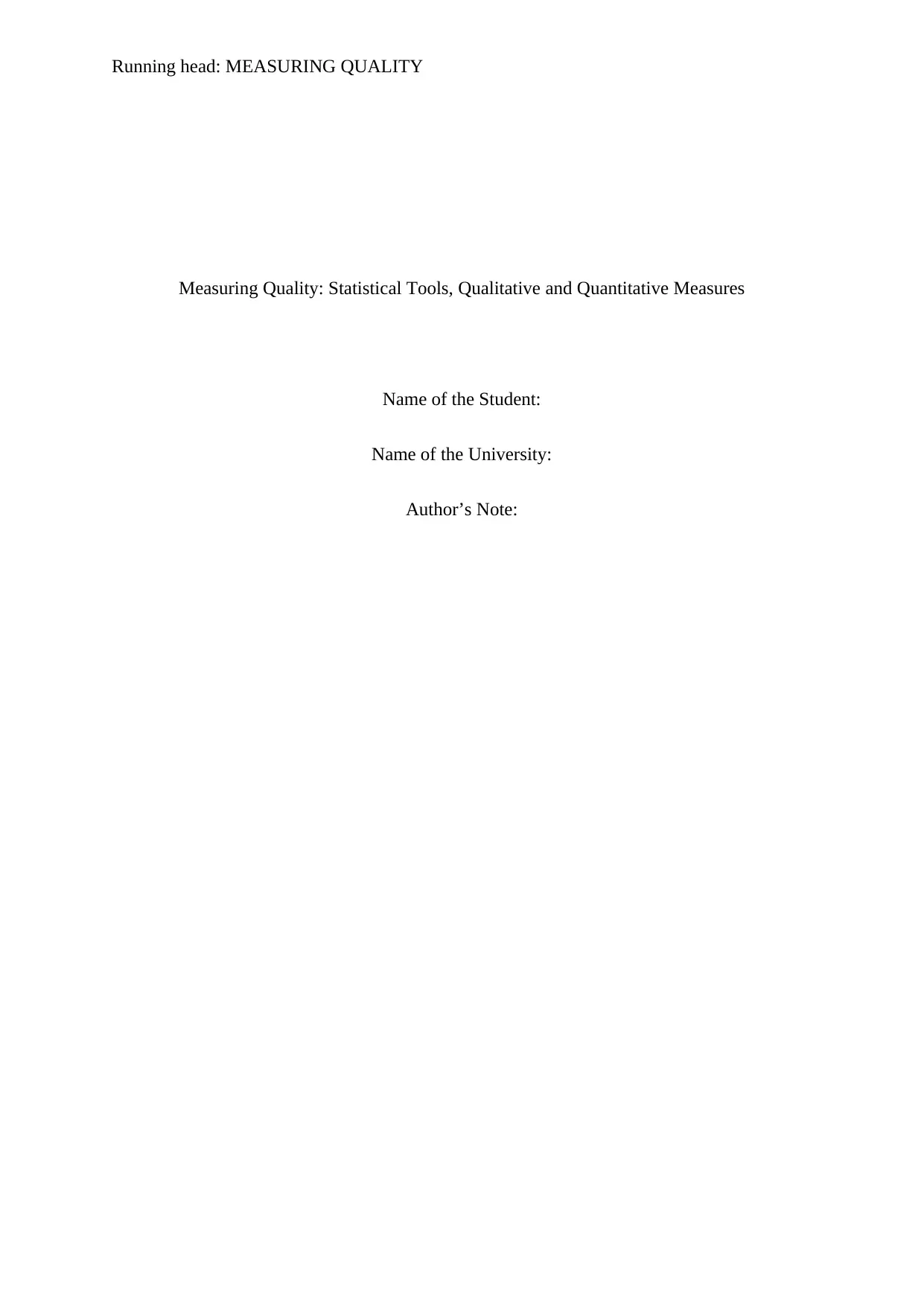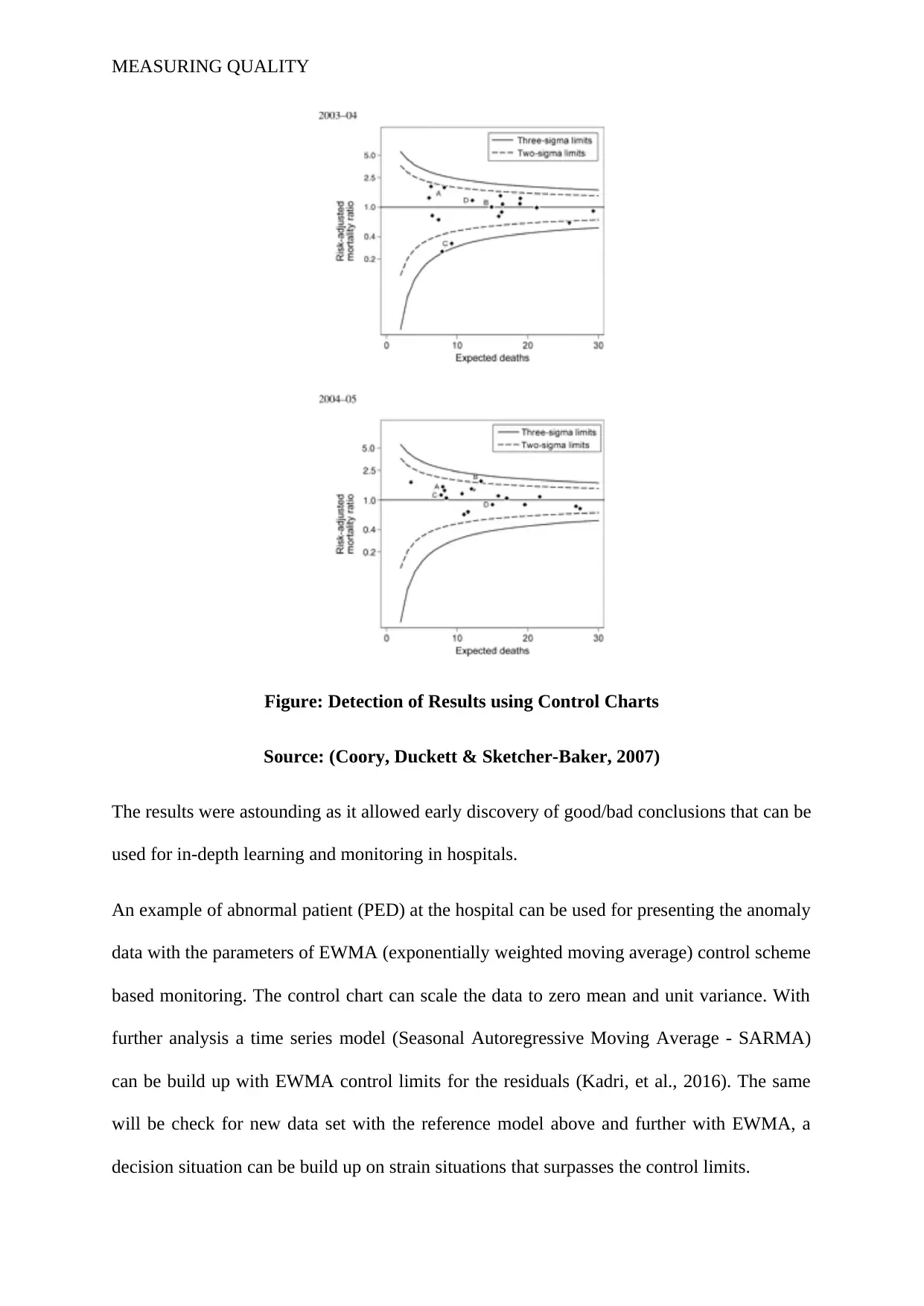Statistical Tools for Measuring Quality in Patient-Centred Healthcare
VerifiedAdded on 2023/06/04
|4
|710
|381
Report
AI Summary
This report discusses the application of Statistical Process Control (SPC) and other quality tools in patient-centred healthcare to improve cost, quality, and patient experience. It highlights the use of seven basic quality tools, including Pareto charts, control charts, and cause-effect diagrams, emphasizing their role in process improvement. Control charts are particularly useful for detecting variations quickly. The report also provides examples of how control charts and anomaly detection methods, such as EWMA (exponentially weighted moving average), can be used to monitor patient data and identify potential issues in hospital settings, referencing studies that demonstrate the effectiveness of these tools in early detection and continuous monitoring of healthcare quality.
1 out of 4






![[object Object]](/_next/static/media/star-bottom.7253800d.svg)